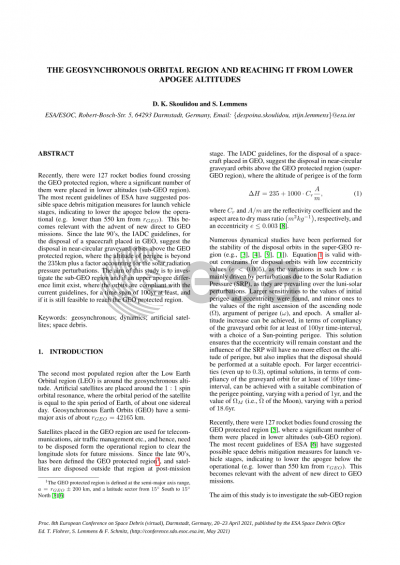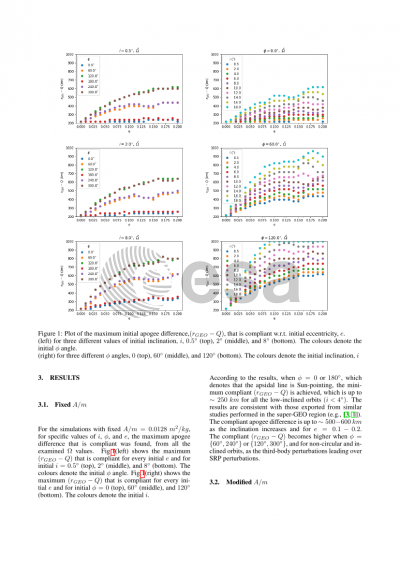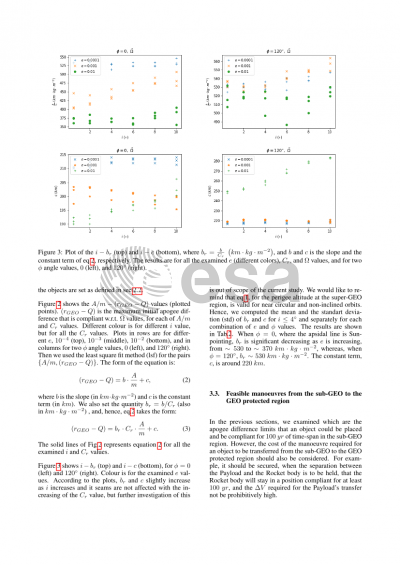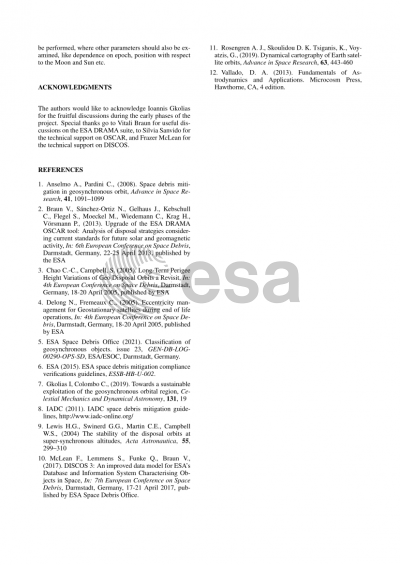Document details

Abstract
The Geosynchronous Orbital region (GEO) is the second most populated region after the Low Earth Orbital region. Since the late 90’s, the Inter-Agency Space Debris Coordination Committee (IADC) has established guidelines for the disposal of a spacecraft placed in GEO. The guidelines suggest the disposal in near-circular graveyard orbits above the GEO protected region, where the altitude of perigee is beyond the 235km plus a factor accounting for the solar radiation pressure perturbations.
Recently, there were 127 rocket bodies found crossing the GEO protected region (`Classification of Geosynchronous objects’ report, ESA, 2020), where a significant number of them were placed in altitudes lower that the GEO protected region. The most recent guidelines of the European Space Agency (ESA, 2015) have suggested possible space debris mitigation measures for launch vehicle stages, indicating to lower the apogee below the GEO protected region (e.g. lower than 550 km from GEO). This becomes relevant with the advent of new direct to GEO missions.
In this study, we examine the dynamics around the GEO region with focus in the region below the protected region. The aim is to investigate if an upper apogee altitude limit exist, where the orbits are compliant with the current guidelines, for a time span of 100yr at least. Furthermore, we investigate efficient orbital manoeuvres to reach GEO from an injection orbit.
Preview








